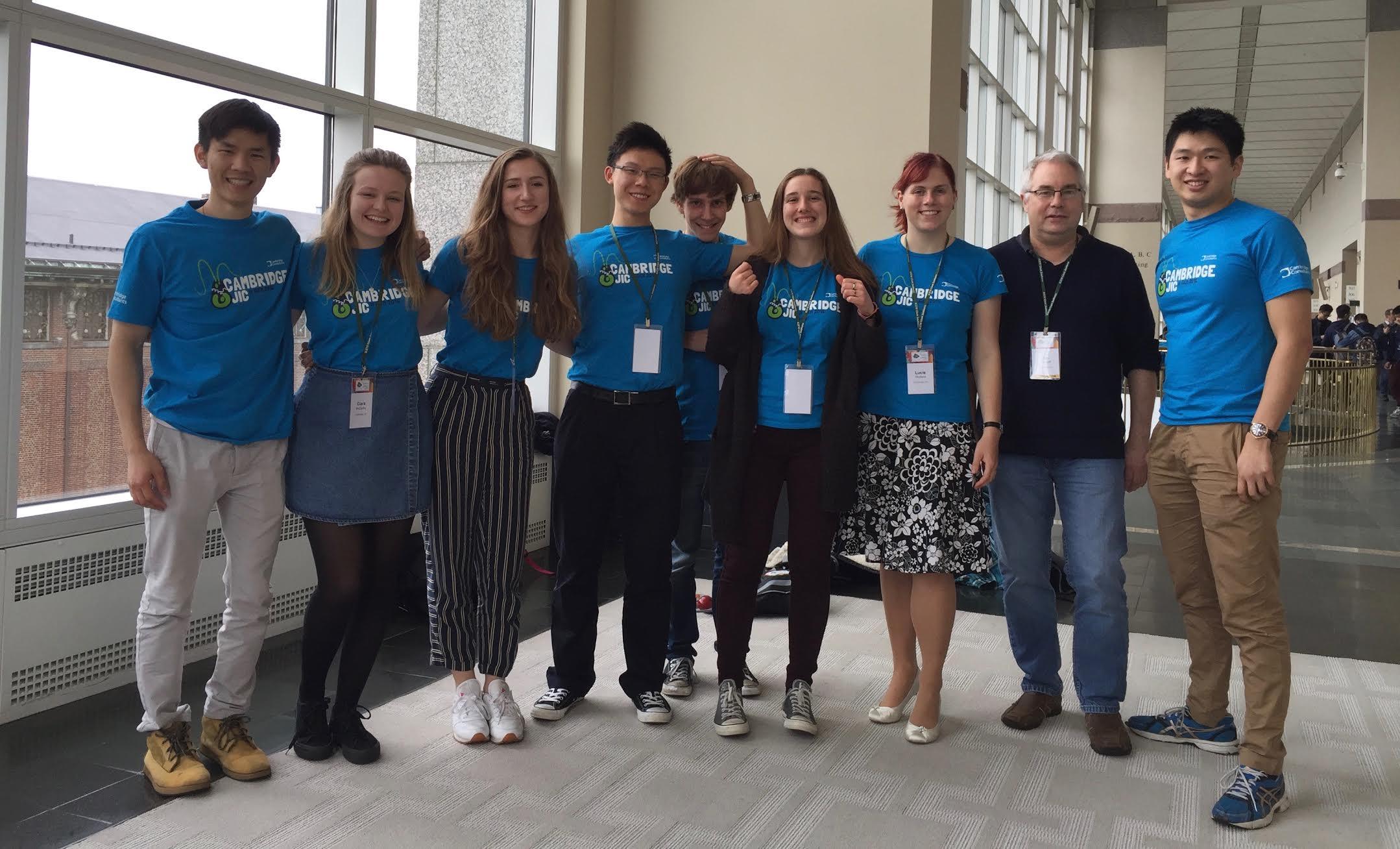
Submitted by Jenny Molloy on Sun, 20/11/2016 - 19:42
The Cambridge-JIC iGEM Team 2016 explored open source synthetic biology tools for chloroplast engineering in algae.
The following was authored by iGEM team member Geoff Ma and is reposted with permission from the Cambridge Consultants blog.
Standardisation is everywhere.
Standardisation has enabled rapid industrial development. Examples could include nuts and bolts in engineering, or even USB protocols in computing. These universally accepted standards provide the necessary platform to encapsulate tasks which are now seen as trivial.
Almost inevitably, there has been a desire within the scientific community to standardise elements of synthetic biology. One such attempt has been the iGEM Foundation, where a library of parts is being built; with teams participating in the iGEM competition contributing to the parts library each year.
The concept is really quite simple. Sections of DNA which code for something specific (e.g. a protein or a promoter) are constructed into parts – or BioBricks. These BioBricks are normally stored in a plasmid for storage/replication in e-coli competent cells, and can be easily extracted and inserted into a transformation plasmid (vector backbones) to modify the DNA of a cell.
There is, however, much scepticism around the whole concept of standardising biological parts. During discussions with various individuals in the scientific community, many of them raise their doubts about the viability of the iGEM project. One key question is that parts developed for one species may well be incompatible with others – one comparison described expressing DNA in different micro-organisms as analogous to attempting to express mammalian DNA in birds.
The issue of compatibility is somewhat amplified as iGEM looks to expand into plants, using its new ‘PhytoBrick’ standard. Plants bring additional challenges; and the compatibility of the vector backbone now becomes an issue, where each species may require a different backbone.
The good news is that backbones can be constructed to iGEM standards but often at the cost of compromising the integrity of certain sequences. Yet, despite this, the standard registry struggles with the storage and replication of anything which isn’t a BioBrick or PhytoBrick.
These issues have been reflected in our own Chlamydomonas (algae) chloroplast project. For a successful transformation, there are very specific requirements of the vector backbone (it must have the correct homology regions). Almost inevitably, no such plasmid exists (which complies with iGEM standards). Furthermore, PhytoBrick standards enforce certain rules, which means that we’ve had to modify some of our designs to comply.
 Despite these challenges, we’ve designed and ordered various parts (including cas9, antibiotic resistance and various other fluorescent proteins). In our wet lab, we’re currently in the process of ligating these into storage/replication plasmids, for submission to the registry. Our parts do, however, require testing; but due to the lack of a suitable iGEM backbone, we’re testing with an externally sourced expression plasmid.
Despite these challenges, we’ve designed and ordered various parts (including cas9, antibiotic resistance and various other fluorescent proteins). In our wet lab, we’re currently in the process of ligating these into storage/replication plasmids, for submission to the registry. Our parts do, however, require testing; but due to the lack of a suitable iGEM backbone, we’re testing with an externally sourced expression plasmid.
We do, of course, want to make our parts as accessible as possible for future teams. To these ends, we’d also like to construct our own backbone, which meets the iGEM standards. The construction, distribution and storage of this backbone will bring various challenges; but successful completion will provide the components needed to use our parts.
It seems clear to me now that a ‘one-part-fits-all’ system isn’t really viable at this stage but my view is that it’s definitely possible to have a registry of parts, all with strict compatibility criteria. The result of this will, invariably, be a large registry of parts and backbones optimised for different species – not as simple but incredibly useful.
Where does this fit into the commercial world of synthetic biology?
I’m not alone in my view that synthetic biology is in its infancy, and I believe that a library of standard parts would help propel the industry forwards. I suppose the main benefits would be the reduction in time to synthesise/acquire common parts and avoiding lengthy delays in finalising material transfer agreements (MTAs).
Standardising parts will be a huge step forwards, providing benefits to everyone. However, building this registry is neither a fast, nor easy, process. The potential benefits for the whole industry make building a reliable registry worthwhile.
Note from Cambridge Consultants
Synthetic biology has huge potential to solve many of today’s critical challenges in healthcare, agriculture, energy and the environment. That’s why Cambridge Consultants has decided to sponsor the Cambridge University team at iGEM 2016 – the international genetically engineered machine competition run by MIT. As part of our sponsorship, we are acting as mentors – giving the team access to more than 700 Cambridge Consultants engineers and scientists worldwide to help solve problems during this year’s project.
The iGEM team is also grateful for support from:
- University of Cambridge, School of Biological Sciences
- OpenPlant
- BBSRC, the Wellcome Trust, and the Society for Experimental Biology

